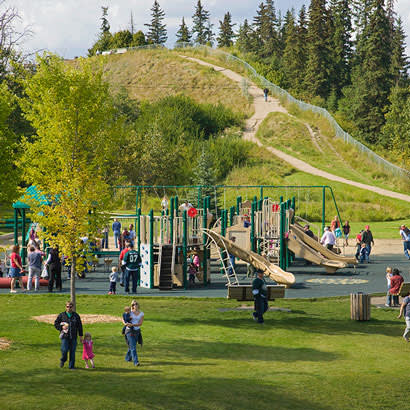
Today’s parks and recreation are not your momma’s playground program! They are multifaceted physical and socioeconomic systems that daily deliver the foundational needs and essential human services of our modern existence. It’s not just fun and games anymore!
So much of what constitutes the appeal and livability of our communities is our direct connection to our public spaces and our natural and cultural assets. Their facilities and features build a strong and resilient infrastructure. Their recreational opportunities bolster our wellness and life satisfaction. Together, our park and recreation systems contribute expansively to a healthy economy, environment and society in at least 50 tangible ways — linked below to corroborating research and authenticating documentation.
- Facilitate physical activity and healthy lifestyles
- Advance social equity and access
- Preserve and sustain environmental quality
- Connect people to nature for human health benefits
- Facilitate positive youth and family development
- Reduce carbon footprints and pollution
- Nurture physical, mental, emotional therapy
- Promote healthy food production and choices
- Create popular public spaces through green infrastructure
- Preserve wildlife habitat and connective corridors
- Administer preventative treatment for drug abuse, and criminal and risky behaviors
- Reduce stormwater management costs
- Fortify tourism and economic development
- Improve physical, cognitive, social and emotion functioning of people with special needs
- Foster creative play
- Mitigate urban blight and brownfields
- Stimulate business viability and diversity
- Reduce heat island effects and energy costs
- Buffer extremes of flood and drought
- Foster community engagement
- Develop athletic skills and healthy competition
- Preserve and enhance biodiversity
- Facilitate and promote public-private partnerships
- Strengthen motor and cognitive skills in young children
- Build experiential learning, team cooperation and leadership
- Rejuvenate mental clarity and alleviate stress and attention deficit disorders
- Safeguard park visitors and recreation participants
- Foster risk resilience and independent mobility skills in children
- Enhance property values
- Facilitate meaningful leisure experiences contributing to quality of life
- Provide teen mentoring, workforce preparation, and vocational training
- Boost student performance and educational attainment
- Administer child nutrition and food distribution programs
- Create multimodal transportation alternatives and reduce traffic congestion
- Reduce healthcare costs
- Rejuvenate employee productivity and stimulate creativity
- Provide forums for public art, entertainment and expression
- Expedite medical recovery and boost immune systems
- Foster diversity and cross-cultural cooperation
- Reduce crime and increase community safety
- Enable access to economic and socio-cultural goods
- Improve air quality
- Promote and regenerate community resilience, cohesion, and vibrancy
- Generate $140 billion in economic activity and support 1 million jobs
- Preserve and interpret historical and cultural resources
- Reduce taxes
- Stimulate recreation-related equipment and supplies sales
- Mitigate youth crime and deviant juvenile behaviors
- Establish a sense of place and belonging
- Serve as civic repositories of social capital and community wellbeing
Park and recreation systems are the attractive masterpieces of our most vibrant cities and communities. It’s there that we connect nature and neighborhoods for our individual, social, environmental and economic wellbeing. Investment in these diverse community assets always produces a high return — with profitable benefits for all.
Tim Herd, CPRE, is the CEO of the Pennsylvania Recreation and Park Society.

